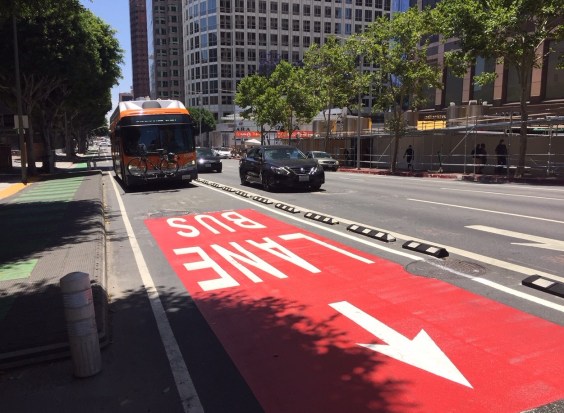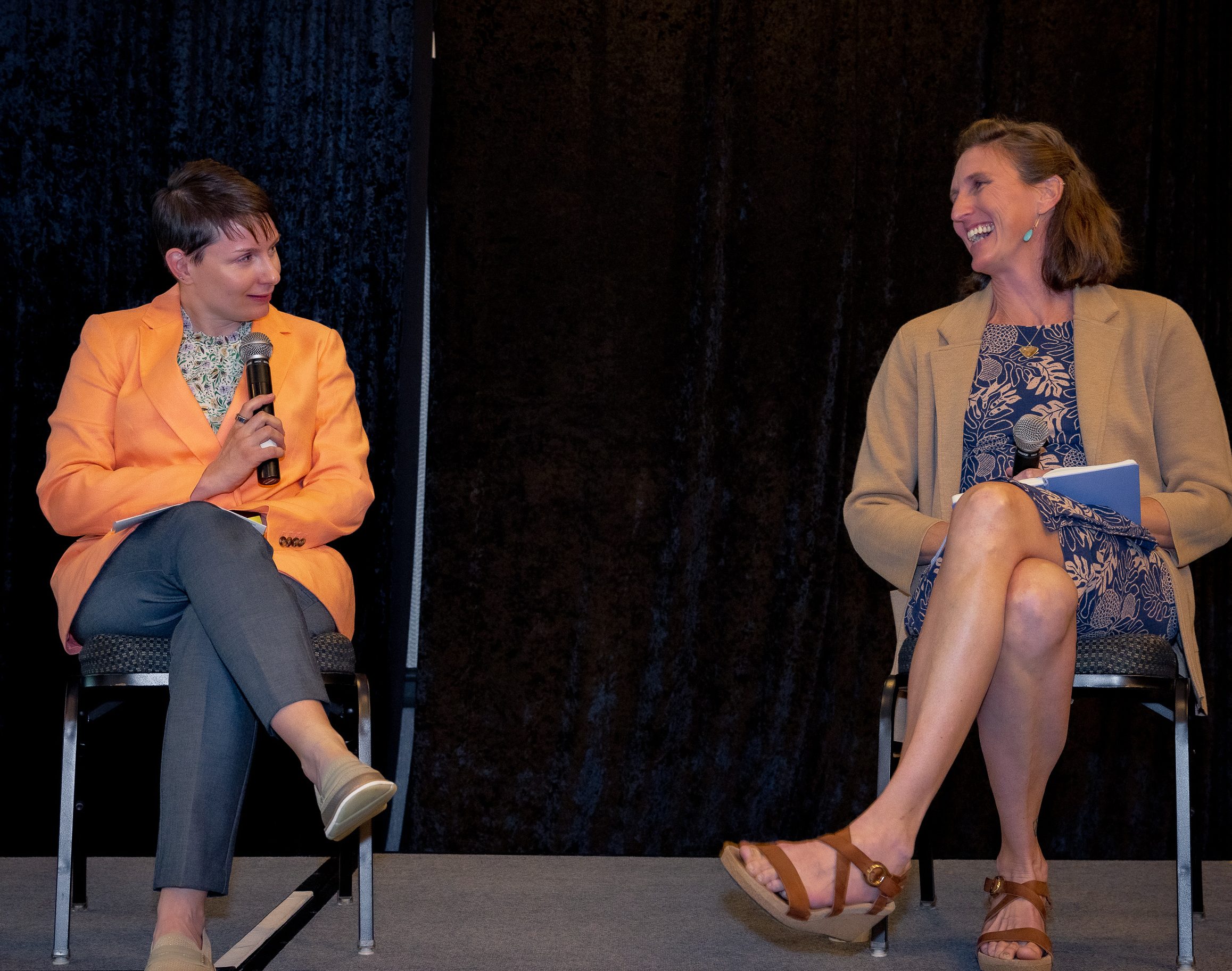Governor Signs Bill to Ease Parking Requirements for Affordable Housing
4:46 PM PDT on October 12, 2015

Governor Jerry Brown had a Sunday deadline to sign legislation or veto it. Late in the day on Friday he signed Assembly Bill 744, which allows affordable housing developers to build less parking than many local zoning regulations currently permit.
The bill is a victory for affordable housing advocates, who have been saying for a number of years that the burden of building more parking than tenants use has made affordable housing too expensive to build.
A.B. 744, authored by Ed Chau (D-Monterey Park), is limited to a few very specific types of housing, all meant to house population groups that tend to own few cars and drive less than the general population. Those are: housing for seniors, housing for special needs populations, and housing for low-income and very-low income people. It also applies to mixed-income developments that include a minimum number of affordable units. All categories are required to have a specified level of transit access (for details, see after the jump).
“This is super tailored to affordable, multifamily housing near transit,” said the bill's sponsor, Domus Development founding partner Meea Kang. “It will help small cities that don't have the political will to build good projects. This will give them tools to reduce parking, which they absolutely have to do to be able to get funding for needed housing projects.”
Under the new law, if a developer of these types of housing asks to be allowed to build less parking than required by zoning regulations, a city has to allow it—as defined in the statute, see below—unless it can demonstrate that more parking is necessary. And A.B. 744 specifies what that “demonstration” would entail, not leaving it to a vague "parking study." A parking study to show that a development needs more parking would have to be somewhat recent and based on “substantial evidence,” including area-wide parking availability, transit access, potential for shared parking, the effect of parking requirements on the cost of developments, and rates of car ownership among low-income, senior, and special needs individuals.
This shifts the burden of proof from the developer to the city, in the process codifying the assumption that in general these populations need and use fewer parking spots. And while it's a win for affordable housing developers, it's also a win for sustainable transportation, clean air, and climate change efforts. As long pointed out by UCLA professor Donald Shoup and others, excessive amounts of parking contribute to more vehicle miles driven in a myriad of ways. [PDF]
Kate White, Deputy Secretary of Environmental Policy and Housing Coordination at the California State Transportation Agency (CalSTA), is excited about A.B. 744. “It's not just a housing bill,” she said. “It's very much supporting the direction we want to see transportation going in terms of less dependency on single-occupant vehicles and the facilitation of better land use for more transportation choices.”
“This bill supports so much of the transformation of the transportation sector that we're looking to advance at CalSTA, including a shift to more low-carbon transportation modes and more efficient land use,” she added. “Rather than the abundance of empty parking spaces that we see in structured parking at affordable housing developments around the state, we can better use of that same space for higher, better uses like bicycle parking, or a bike sharing station, or a community room, or a health care clinic—or more housing units.”
The bill was opposed by the League of California Cities, which saw it as an attack on local control of zoning regulations and fought it to the end. Many of the League's objections were answered with amendments in the process of negotiating the bill through the legislative process, but the League stuck to its argument that “the parking thresholds in this bill do not reflect realistic parking demand from such projects”--despite the fact that most current parking requirements, as Professor Donald Shoup has shown, are not backed up by meaningful data [PDF]. In addition, work done by TransForm shows that parking demand in many of these kinds of buildings is much lower than cities think it is.
The League accused the bill's authors of intending to purposely build too little parking “to make it harder and more costly to park and thereby compel residents to give up their cars.”
“This strategy,” wrote Daniel Carrigg, the League's legislative director in its letter opposing the bill, “will clearly lead to parking spillover problems.” He worked this fear of not enough parking for all it was worth: “Working low-income residents... will be forced to spend their limited income for parking garages,” he wrote. “Seniors seeking to avoid unsafe transit may have to park long distances away.... A vehicle may be the last significant property of a homeless individual seeking special needs housing.” Does he mean to say they would prefer to live in their cars? Is there really no way to invest in transit so that it's safe for seniors?
No wonder Senator Bob Wieckowski (D-Fremont), in a committee hearing on this bill earlier this summer, accused local cities of being “tone deaf.”
Luckily, if cities are too frightened at the thought of all this spillover parking, they can complete parking studies, and while they're at it they can look at the gap between what low-income people make and how much it costs to own a car or at how building parking raises the cost of rents for everyone.
Those who opposed the bill “are used to their idea of what they see as the norm,” said Kang. “They think of people who own two or four cars, who have large houses and large families. They can't imagine life any other way, even though their own children are fleeing to the cities.”
“Hopefully more people will start realizing that it's better to build our way out of this than do nothing,” she added. “The status quo is not a solution.”
A.B. 744 was not the only bill addressing affordable housing in this session, but others were not so successful. Senate Bill 377 and A.B. 35 both sought to change the way state tax credits function to make it easier for affordable housing developers to get them and use them. S.B. 377 would reduced federal taxes and cost the state nothing, and A.B. 35 would have increased the amount of state tax credits for affordable housing by $100 million. However, Governor Brown vetoed both, along with a batch of other tax credit bills, saying the state's budget was too “precariously balanced”—even though last year he passed a bill that provided more than twice as much in tax credits to the filmmaking industry.
Without access to those tax credits, said Kang, “We end up leaving federal resources on the table that we can't use.” Those resources include low interest loans and federal tax credits that require state assistance.
“Meanwhile,” she said, “Our teeny tiny little parking bill was signed. It's revenue neutral and doesn't cost the state anything, but it will create a boost for affordable housing.”
Removing parking requirements changes more than just financing for affordable housing developers. “It just opens it up to get better urban spaces,” said Kang. Without having to build as much parking, it's possible to incorporate “wider sidewalks, fewer curb cuts, more street trees—and we can dedicate more space to housing.”
The passage of A.B. 744 “will absolutely help new projects,” she added. “There will be more developer opportunities, and more people thinking about different kinds of development.”
“We have over ten million people in California that don't drive,” said CalSTA's White. “This bill is for them.”
A.B. 744 allows developers of specific housing types to request lower parking minimums, to wit:
- 100 percent affordable housing within ½ mile of transit with frequent service: 0.5 parking spaces per unit
- 100 percent affordable housing for seniors, within ½ mile of somewhat frequent transit service OR with access to paratransit service: 0.5 parking spaces per unit
- 100 percent affordable housing for developmentally disabled adults, within ½ mile of somewhat frequent transit service OR with access to paratransit service: 0.5 parking spaces per unit
- Mixed-income housing within ½ mile of a well-served transit stop AND with at least 11 percent of the units set aside for extremely low-income residents or 20 percent set aside for low-income residents: 0.5 parking spaces per bedroom
Note that the new law does not completely eliminate all parking spaces. Reports of the death of parking minimums have been greatly exaggerated.
Streetsblog California editor Melanie Curry has been thinking about transportation, and how to improve conditions for bicyclists, ever since commuting to school by bike long before bike lanes were a thing. She was Managing Editor at the East Bay Express, editor of Access Magazine for the University of California Transportation Center, and earned her Masters in City Planning from UC Berkeley.
Read More:
Stay in touch
Sign up for our free newsletter
More from Streetsblog California
Bill to Require Speed Control in Vehicles Goes Limp
Also passed yesterday were S.B 961, the Complete Streets bill, a bill on Bay Area transit funding, and a prohibition on state funding for Class III bikeways.
‘We Don’t Need These Highways’: Author Megan Kimble on Texas’ Ongoing Freeway Fights
...and what they have to teach other communities across America.
Wednesday’s Headlines
Brightline LA-to-Vegas promises quick construction; LA Metro buses set to test camera enforcement of bus lane obstruction; Why are we still knocking down houses to build freeways? More
Brightline West Breaks Ground on Vegas to SoCal High-Speed Rail
Brightline West will be a 218-mile 186-mile-per-hour rail line from Vegas to Rancho Cucamonga - about 40 miles east of downtown L.A. - expected to open in 2028
CalBike Summit to Advocates: Don’t Take No for an Answer
"Persistence with kindness." "Keep trying different things." "You have to be kind of annoying." "Light up their phones."




